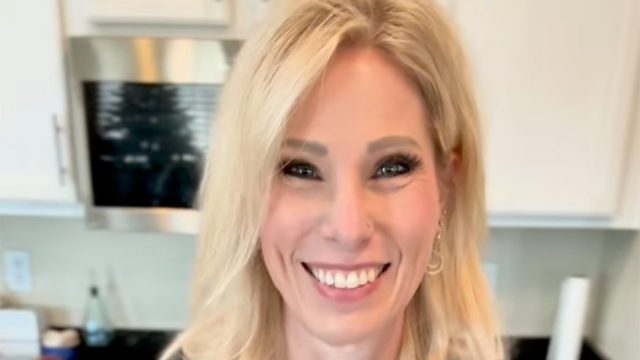50+ Coach Dropped 15 Pounds with 6 Simple Protein Hacks

Are you struggling to lose weight despite increasing your protein intake? Lois Hughey is a weight loss warrior and coach who lost 15 pounds and kept it off. Now, she makes it her mission to help women over 50 "simplify nutrition and fitness" and regularly offers tips for sustainable fat loss in menopause on her social media feeds. In a new social media post, she reveals easy ways to get enough protein into your diet so you can lose weight. "When you need more protein but have no idea how to get it…grab these 6 simple protein hacks," she writes.
Protein Is Important for Weight Loss
"When you haven't even thought about protein for most of your life, trying to figure out how to add MORE feels almost impossible. Protein helps keep you full for longer, helps control hunger and reduces cravings, and is the key to building more muscle, which is VITAL in midlife and beyond for overall health and longevity," she says.
Here's How Much You Need
How much protein do you need? "I recommend 0.8-1g per pound of ideal body weight, but you can start with 100g if you aren't quite there yet. Here are my favorite tips," she writes.
Increase Serving Sizes
Her first tip? "Increase serving sizes," she suggests. "If you are used to having just 2-3 ounces at a meal, increase to 4-5 ounces."
Eat Protein First
Also, she recommends eating your protein in a particular order. "Eat protein first," she says. "If you start with your carbs or fat at meals, you will fill up quickly and not be hungry for protein. Start with protein and fats and eat carbs last. This will also help with blood sugar balance."
RELATED: 20 Superfoods for People Over 50
Spread It Out Throughout the Day
She also doesn't recommend eating all your protein in one meal. "Aim for 30+ grams at each meal plus one or two snacks that include a protein source," she writes.
Keep Protein on Hand
Also, keep protein handy. "Have plenty of protein on hand by preparing 2-3 sources for the week. Cook extra chicken on the grill, brown up ground beef or chicken, and throw something in the crock pot," she suggests.
RELATED: I Got Into the Best Shape of My Life at 50 by Following These 6 "Basics"
Get No Prep Proteins
"Make it easy" on yourself, she continues. "Buy no prep proteins like Greek yogurt, rotisserie chicken, deli meat, cottage cheese, jerky or turkey sticks, even canned options like tuna or salmon are quick and easy options."
Supplement If You Need To
Finally, supplement if you need to. "A good protein shake lets you get 30g in without even thinking about it (DM me for a 15% off code at Paleo Valley… I'm loving their vanilla beef broth)" she says.
RELATED: I'm 50+ and These 7 Fat-Blasting Habits Keep Me in the Best Shape of My Life
Science Has Linked Protein to Weight Loss
Clinical trials support that consuming more protein than the recommended dietary allowance reduces body weight (BW) and enhances body composition by decreasing fat mass while preserving fat-free mass (FFM) in both low-calorie and standard-calorie diets. And if you enjoyed this article, take advantage of these 15 Quick Ways to Lose Body Fat Percentage in a Week.




